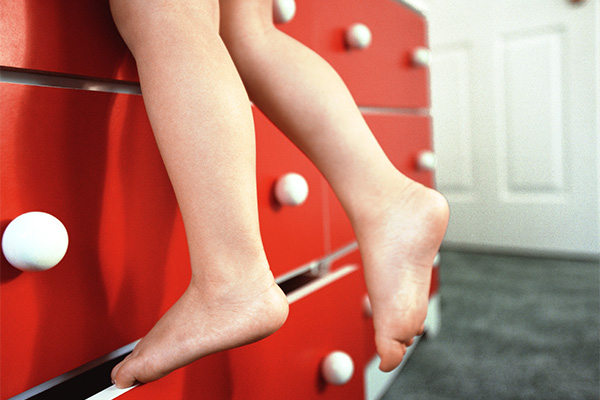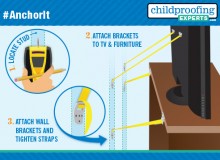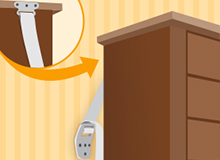
While the furniture in your home may not seem like a danger zone, it has potential for causing serious injury to children. Children will not think about the risk of injury or death when climbing on a dresser to reach a toy or something they want.
Myth #1: The dresser is so heavy, it will not tip over.
The dresser might have been heavy for the movers or the furniture delivery people. However, that dresser is still a hazard for a young child. When a child opens the drawers and climbs on them, even a heavy dresser or other type of furniture can fall on a child. When the drawers are opened, the center of gravity changes and the furniture could tip over, with or without someone climbing.
Myth #2: We do not need to anchor the dresser in our bedroom because our children do not play in our room.
Tip-over injuries can happen very quickly. Children may wander into a room when you do not expect it, even under close supervision. Anchor the furniture in master bedrooms and other rooms, not just the nursery or play room.
Myth #3: We latched the drawers so the dresser is now safe.
Cabinet latches are designed to prevent access to cabinets and drawers for babies and young toddlers. Cabinet latches ARE NOT designed to replace furniture anchors. Eventually, children will learn to defeat latches and the dresser will still be a tip-over risk. A three-year-old might be able to defeat many cabinet latches but is still at risk for a serious tip-over injury if he or she climbs on a dresser.
Myth #4: Older children know not to climb.
Children do not think about a dresser or a bookcase being something that could harm them. They climb to reach something they want on the top of the furniture. Often, drawers are used like a ladder so the child can reach an item that is too high for them. Even if you have explained that climbing is dangerous to your toddler or pre-schooler, a parent should not trust that a curious child will remember their safety lesson.
Myth #5: We purchased a safe sturdy dresser and bookcase from a great furniture store.
ALL TYPES of furniture pose a hazard, including discounted furniture and high-quality furniture, tall bookcases and short bookcases, short chests with drawers, tall dressers, armoires, furniture with shelves and/or doors and more. Anchor furniture, and consider pieces with drawers to be extra risky, even if the piece only has one drawer.





